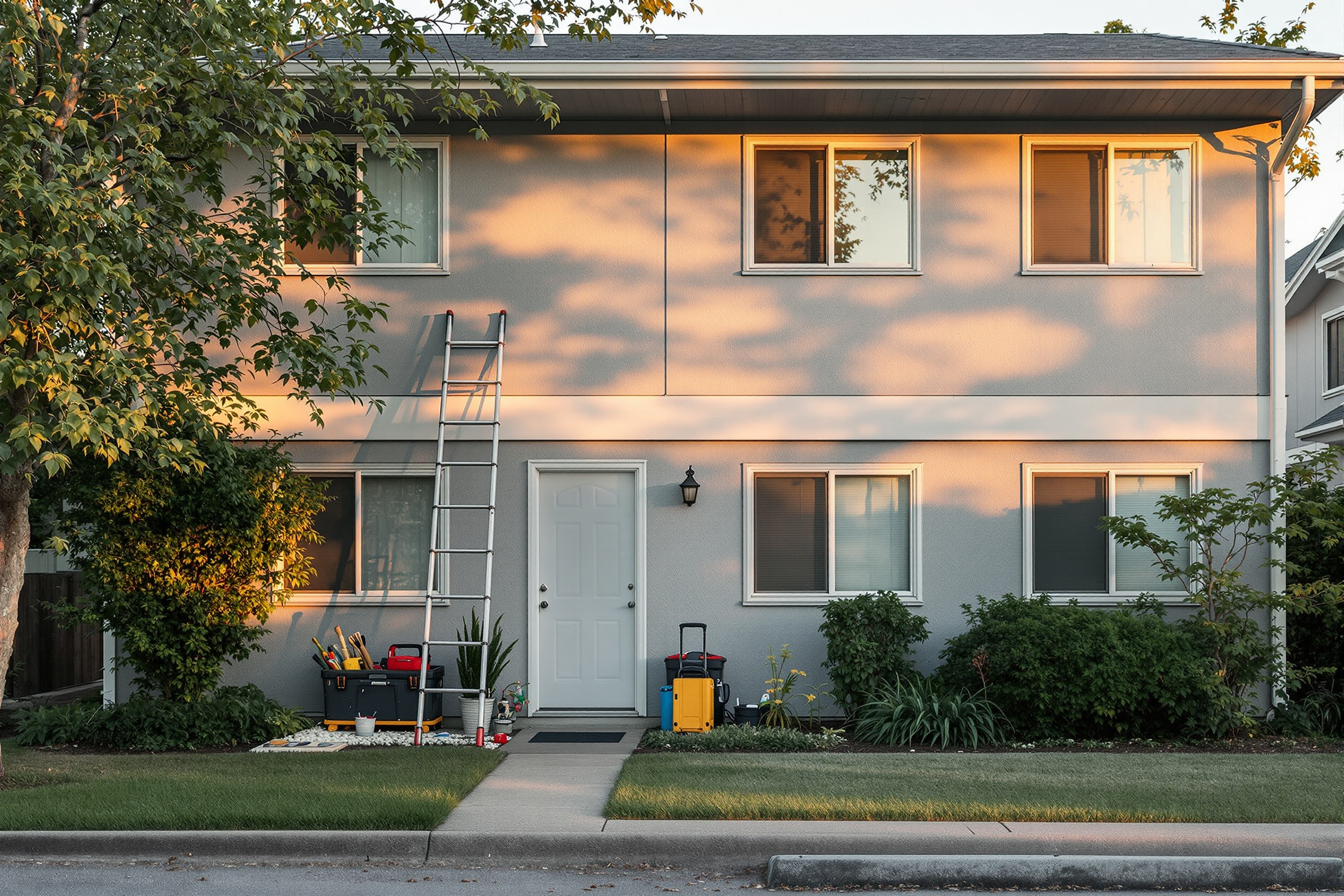As a landlord, you already know property damage can be inevitable, but what is considered normal wear and tear? More importantly, how do you differentiate between normal wear and tear and tenant-caused damage?
It's essential to clearly define what is considered normal wear and tear versus tenant-caused damage in your lease agreement. Communicating effectively with renters about their responsibilities to maintain your property can help avoid excessive damage and protect your investment. Doing so will also help determine who is liable to pay for certain damages–your tenants, or you.
This article will walk you through what constitutes normal wear and tear and how to distinguish it from atypical damage. With this knowledge, you'll be better equipped to protect your investment and avoid unnecessary tenant disputes.
What Is Normal Wear and Tear?
Before differentiating normal wear and tear from tenant-caused damage, it helps to understand what represents normal wear and tear in a rental property.
Normal wear and tear is the natural degradation of your property due to aging and reasonable usage by tenants. This means that a tenant's ordinary daily activities should not be considered as damage to the property.
To help make the difference clearer, here are 10 common examples of normal wear and tear that landlords can expect in a rental property:
- Minor scuffs and scratches on walls and floors from regular use
- Fading or some discoloration on carpet or paint due to age and exposure to sunlight
- Worn-out or frayed cords on drapery or blinds
- Fading or discoloration of wood floors due to natural aging
- Dirt, dust, or cobwebs on walls, ceilings, and baseboards
- Loose handles or hinges on doors and cabinets
- Fading on bathroom fixtures such as taps, faucets, and showerheads
- Minimal cracks in the ceiling or walls due to settling
- Small nail holes or marks on walls related to pictures or artwork
- Faded or cracking grout between tiles
These are just a few examples, and what constitutes normal wear and tear may differ depending on your location and the type of rental property you own.
As a landlord, conducting regular inspections and maintenance is essential to ensure your rental property remains in good condition. If you notice any significant changes or damages that may require repair, it's vital to document them and communicate with your tenants to avoid any confusion or disputes later.

Examples of Tenant-Caused Damage
Tenant damage refers to any destruction caused by tenants, household members, guests or vandalism that is beyond the natural wear and tear of the property. This includes damages to the property, equipment, fixtures, appliances, landscaping, and furnishings.
Here are some examples of tenant-caused damage that landlords generally consider excessive:
- Broken windows, doors, or locks due to forced entry
- Damaged or missing light fixtures or ceiling fans
- Torn or damaged carpet beyond normal wear and tear
- Burned or damaged countertops from hot pots or pans
- Holes or cracks in walls or ceilings beyond normal wear and tear
- Stains on walls or ceilings beyond normal wear and tear
- Significant water damage or mold caused by tenant negligence
- Broken toilet or sink due to misuse
- Pet damage beyond normal wear and tear (e.g., scratched floors or chewed woodwork)
- Damaged or missing tiles in the bathroom or kitchen area
Defining Wear and Tear in Your Lease Agreements
Here are some suggested best practices for landlords to establish a clear definition of what is considered normal wear and tear versus tenant-caused damage in the lease agreement:
- Define normal wear and tear and tenant-caused damage in the lease agreement. Have a clause that defines both regular wear and tear and what may be considered tenant-caused damage.
- Be specific. Be as thorough as possible when defining normal wear and tear, citing examples and outlining what types of damage are considered excessive.
- Conduct a move-in and move-out inspection. Conduct a walk-through inspection with your renters before their tenancy, noting any pre-existing damage or problems present. When the tenant moves out, thoroughly inspect the rental property and list any tenant-caused damage.
- Document everything. Document and photograph the property's condition before the tenant moves in and after they move out. This will help to identify the charges that can be attributed to tenant-caused damage.
- Provide an itemized list of charges. If your tenant is charged for damages, provide an itemized list of the damage and what repair costs will be billed to them.
- Communicate your expectations. Communicate your expectations and responsibilities to your renters and outline what you expect them to do to maintain the property.
By following these best practices, you can clearly define the difference between normal wear and tear versus tenant-caused damage, set expectations for your tenants, and protect your investment. It's also helpful to seek legal counsel and familiarize yourself with state and local laws and regulations to ensure all your agreements and practices abide by them.
Who Pays for Repair Costs?
Whenever there is a repair or maintenance issue related to normal wear and tear or due to the landlord's neglect, the landlord is responsible for fixing it and covering the cost that comes with it. However, when a tenant causes damage, the tenant can be held accountable for these expenses.
Generally speaking, a tenant's security deposit can be used to pay for tenant-caused damages, typically as outlined in the lease agreement. But what happens when the cost of repairs exceeds the deposit amount?
As a first step, it may be beneficial to try to negotiate with the tenant and come up with a payment plan that is acceptable to both parties. You could also consider offering the tenant the option to perform minor repairs themselves in exchange for a reduction in the amount owed.
If you aren’t able to come to an agreement, you may have to take legal action to recover the remaining costs from the tenant. This can involve filing a lawsuit against the tenant or working with a collections agency to recover the debt. It's important to note that the laws regarding security deposits and tenant-caused damages can vary significantly from state to state.
Having a good landlord insurance policy is equally important when it comes to managing repair costs. The right insurance policy includes coverage that protects against unforeseen events such as natural disasters, tenant-caused damage, and other risks. To see how your current policy and rate compares, get a free quote from Obie.







